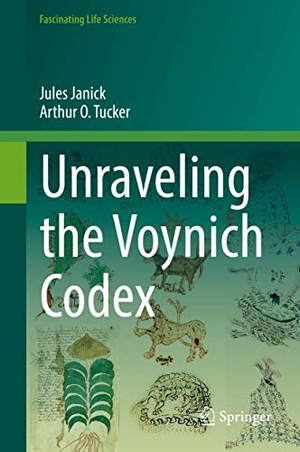Für statistische Zwecke und um bestmögliche Funktionalität zu bieten, speichert diese Website Cookies auf Ihrem Gerät. Das Speichern von Cookies kann in den Browser-Einstellungen deaktiviert werden. Wenn Sie die Website weiter nutzen, stimmen Sie der Verwendung von Cookies zu.
Cookie akzeptieren
Arthur O. Tucker / Jules Janick
Unraveling the Voynich Codex
- Springer International Publishing
- 2018
- Gebunden
- 432 Seiten
- ISBN 9783319772936
Unraveling the Voynich Codex reviews the historical, botanical, zoological, and iconographic evidence related to the Voynich Codex, one of the most enigmatic historic texts of all time. The bizarre Voynich Codex has often been referred to as the most mysterious book in the world. Discovered in an Italian Catholic college in 1912 by a Polish book dealer Wilfrid Voynich, it was eventually bequeathed to the Beinecke Rare Book and Manuscript Library of Yale University. It contains symbolic language that has defied translation by eminent cryptologists. The codex is encyclopedic in scope and contains sections known as herbal, pharmaceutical, balenological (nude nymphs bathing in pools), astrological, cosmological
Mehr
Weniger
zzgl. Versand
in Kürze